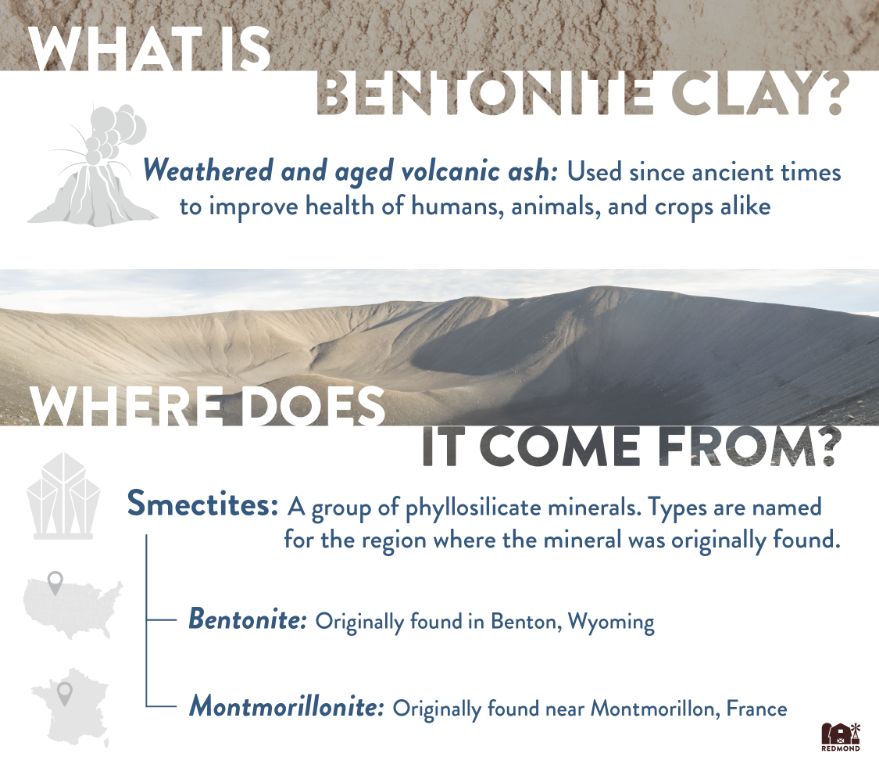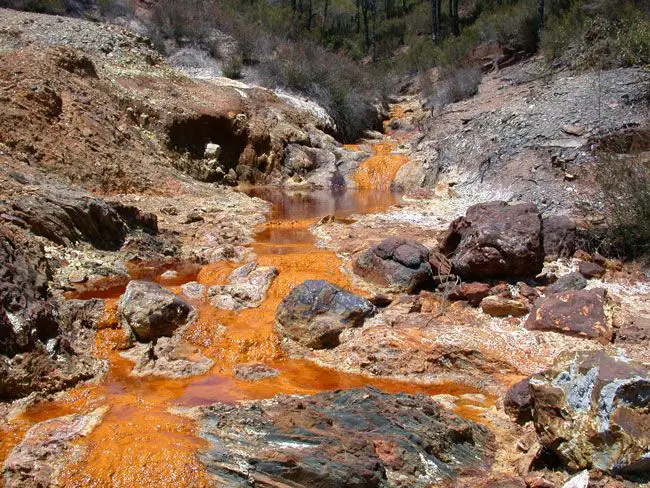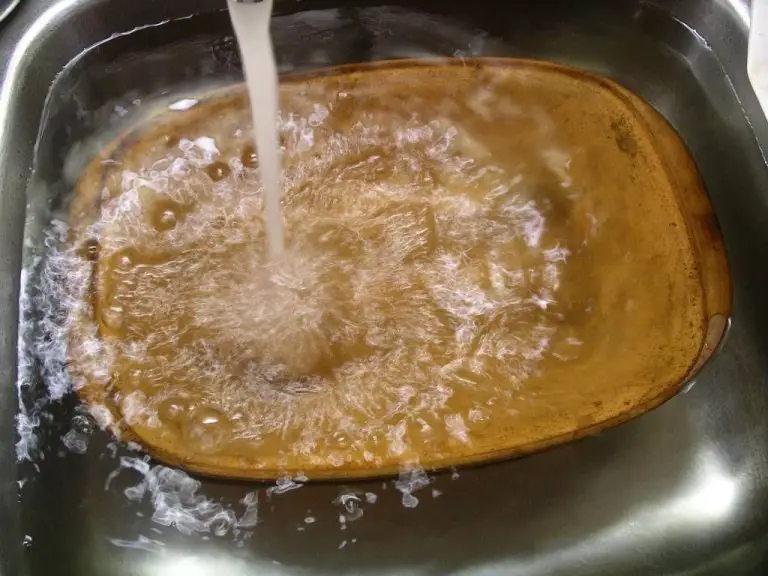What Is Montmorillonite Clay Used For?
Montmorillonite clay is a type of clay derived from volcanic ash and named after Montmorillon in France where it was first identified. The clay is made up of fine particles and has a high cation exchange capacity as well as swelling properties. It is composed primarily of smectite group minerals, the most common being sodium and calcium montmorillonite.
Some key properties of montmorillonite clay include its ability to absorb large amounts of water and expand up to 15 times its dry volume. It also has a high surface area and can absorb and adsorb cations, as well as certain organic compounds. The clay has been used historically for pottery and medicinal purposes. Today it has many industrial applications thanks to its unique colloidal properties.
Montmorillonite clay goes by many common names such as bentonite, smectite, and fuller’s earth. It is soft with a layered sheet-like structure and is known for being plastic and lubricating. The clay can range in color from white to gray, green, or red depending on mineral content.
(Source: https://www.indexbox.io/search/montmorillonite-clay-powder/)
Uses in Personal Care Products
Montmorillonite clay has become a popular ingredient in many personal care products, especially those designed for skin and hair. Its excellent absorbent properties make it useful in products like face masks, skin care creams, bath bombs, and natural deodorants.
In skin care, montmorillonite clay is commonly used in facial masks and creams. When applied topically, the clay can help draw out impurities from pores and absorb excess oil on the skin’s surface. This provides clarifying and mattifying effects, leading to smoother, more balanced skin (source). Montmorillonite face masks may temporarily reduce the appearance of pores as they deep clean.

Montmorillonite is also added to bath bombs and soaks. When dispersed in water, the clay releases mineral ions that can promote relaxation. Some claim that montmorillonite baths may also draw toxins out through the skin, reducing inflammation. The clay’s absorbent properties help leave skin feeling soft and smooth after bathing.
Natural deodorant brands often include montmorillonite clay for its ability to absorb sweat and odor-causing bacteria. By minimizing moisture and bacteria, the clay helps neutralize underarm odor. Montmorillonite may also reduce irritation from shaving when applied topically.
Medicinal Uses
Montmorillonite clay has been used medicinally for centuries to treat a variety of health conditions. Research has shown it may provide benefits for digestion, diarrhea, detoxification, and skin conditions.
Montmorillonite can help digestion by absorbing toxins, heavy metals, and other harmful substances from the gastrointestinal tract. This helps reduce inflammation and allows beneficial bacteria to repopulate, restoring gut health (Yasheng Group, Montmorillonit mining Project). The clay is also used to treat diarrhea, as it firms up loose stools and normalizes bowel movements.
As a detoxifying agent, montmorillonite binds to heavy metals, chemicals, and other toxins in the body, preventing their absorption and eliminating them from the system. This cleansing effect may help with conditions like acne, eczema, and psoriasis. When applied topically, the clay can reduce skin inflammation and irritation (Animal Wellness Magazine, The All-Star Ingredients that Make Natural Pet Food).
Montmorillonite is also given to pets like dogs and cats to treat diarrhea, especially when caused by cancer treatments. Veterinarians recognize the health benefits of the clay in normalizing digestion and detoxification in animals (IndiaMART, Calcium Montmorillonite, Human & Animal,Food Grade).

Household Uses
Montmorillonite clay has become a popular household product due to its ability to absorb odors and liquids. One of the most common household uses is in cat litter. The clay’s absorbent structure helps to eliminate odors from cat waste and reduce tracking around the home. Many natural cat litter products contain bentonite clay for this purpose.
The clay can also be used on its own by sprinkling it in areas where odors occur, such as trash cans, carpets, and upholstery. It will help absorb and neutralize the odors. Some people place bowls of bentonite clay around the house to improve indoor air quality.
For cleaning, a bentonite clay paste can be used to gently scrub surfaces like bathtubs, sinks, and kitchen counters. It provides light abrasive action to remove grime. The clay is also effective at removing grease and oil stains. Mixing bentonite clay with water creates a thick liquid that can be used to scrub floors.
Sources:
https://www.medicalnewstoday.com/articles/325241
https://dontwastethecrumbs.com/use-bentonite-clay/
Industrial Uses
Montmorillonite has several important industrial applications due to its absorptive properties. One of the most well-known industrial uses is as a component of drilling mud used in oil and gas drilling (Uddin, 2021). When added to drilling mud, montmorillonite helps to suspend drill cuttings, stabilize well walls, and seal formations. The clay’s swelling properties allow it to seal cracks and prevent fluid loss. Montmorillonite is also sometimes used in geotechnical engineering applications such as borehole stability and slope stability.
Another application is as foundry sand for metal casting. The clay is able to withstand high temperatures, allowing it to be reused many times in foundries. When mixed with water, montmorillonite binds sand particles together to create molds and cores for casting metals (Uddin, 2021). The clay’s sorption capacity also allows it to remove impurities from molten metal.
Montmorillonite’s absorptive properties are also useful for radioactive waste disposal. The clay can prevent radioactive isotopes in waste from migrating into the environment. By absorbing liquids and binding them within its layered structure, montmorillonite provides a protective barrier for safe disposal of radioactive waste (Yaghmaeiyan et al., 2022). The clay is mixed with waste and engineered into geologic formations to contain radiation.
Agricultural Uses
Montmorillonite clay is commonly used in agriculture for improving soil quality and crop growth. When added to soil, montmorillonite acts as an effective soil amendment that can improve aeration, water retention, and nutrient availability (https://protechminerals.com/montmorillonite/). The small particle size and expanding crystal structure of montmorillonite allows it to penetrate compacted soils, creating spaces for air, water, and roots to access nutrients. Montmorillonite also has a high cation exchange capacity that allows it to hold and release nutrients such as calcium, magnesium, and potassium that are essential for plant growth.

Montmorillonite can also be fed to livestock and poultry as a supplement. It acts as a digestive aid by absorbing toxins and improving the absorption of nutrients. Some studies have found that montmorillonite clay can improve feed efficiency, weight gain, egg production, and overall animal health when added in small quantities to feed (https://blog.redmondagriculture.com/what-is-bentonite-clay-and-how-can-it-help-your-farming-operation).
As a natural pesticide, montmorillonite can be applied to crops to deter insect pests. The fine particles can physically irritate soft-bodied insects and reduce egg laying. Montmorillonite may also disrupt insect chemoreceptors that are used to locate host plants (Earthcrew, Inc.). When combined with other pest deterring minerals, montmorillonite clay applications have been shown to reduce crop damage from certain pests.
Artistic Uses
Montmorillonite clay is widely used by artists for pottery, sculpting, and paints due to its versatility and workability. When mixed with water, montmorillonite becomes extremely plastic and malleable, making it ideal for shaping, molding, throwing, and sculpting. Its fine particle size allows for smooth surfaces and fine detail in artistic works.
For pottery, montmorillonite is often combined with other clays to improve plasticity and workability. The addition of montmorillonite clay allows potters to throw thinner vessels and taller shapes without collapse. Montmorillonite’s high fusion temperature also makes it useful for stoneware clays fired at higher temperatures.
Sculptors take advantage of montmorillonite’s ability to hold fine detail. When allowed to slowly dry, montmorillonite shrinks very little compared to other clays, minimizing cracking and distortion. Montmorillonite can also be fired at high temperatures to create ceramic sculptures.
In paints, montmorillonite is used as a thickener and binder. Adding a small amount of montmorillonite clay produces smooth acrylic, oil, and watercolor paints that retain brushstrokes and texture. Montmorillonite paints are also valued for their rich, saturated colors.
Overall, montmorillonite’s consistency, plasticity, and versatility make it highly valued by potters, sculptors, and painters looking to exploit the unique properties of clay in their artistic works. Its fine particle size allows for detailed surface textures, while its high fusion temperature enables it to be fired into strong ceramic pieces. Montmorillonite clays help artists transform soft clay into lasting creative works. (https://wiefunktioniertleben.de/clay-arti.html)
Environmental Uses
Montmorillonite clay is widely used for environmental applications due to its high surface area, swelling capacity, and exchangeable cations. Some key environmental uses include wastewater treatment, oil spill cleanup, and landfill liners (Yaghmaeiyan, 2022).
In wastewater treatment, montmorillonite clay can adsorb contaminants through ion exchange reactions. It is effective at removing heavy metals, dyes, pharmaceutical residues, and other pollutants from wastewater (Qi et al., 2023). The clay particles attract and cling to the contaminants, allowing their removal through sedimentation or filtration.
Montmorillonite is also utilized for cleaning up oil spills in aquatic environments. The clay readily adsorbs oil, separating it from the water. The oil-soaked clay agglomerates into larger particles that can then be physically removed (Uddin, 2018). This makes montmorillonite a helpful tool for mitigating environmental damage from oil spills.
In landfill liners, montmorillonite clay is valued for its very low hydraulic conductivity. Compacted clay liners containing montmorillonite effectively limit leaching from landfills into groundwater and surrounding soils. The swelling ability of montmorillonite allows self-sealing of small cracks and leaks in the liner (Yaghmaeiyan, 2022). Its high cation exchange capacity also retains contaminants through adsorption.
Other Unique Uses
Montmorillonite clay has some unique applications in advanced technologies and manufacturing. For example, it can be used in nanotechnology applications due to its small particle size and high surface area. Montmorillonite nanoparticles have been used for drug delivery, enzyme immobilization, and contaminant removal (Yaghmaeiyan, 2022).
The clay also has molecular sieve properties, meaning it can selectively adsorb molecules based on the size and shape of its pores. This allows it to be used for gas purification, separation of hydrocarbon mixtures, and other molecular sieving processes (Wikipedia, n.d.).
Additionally, montmorillonite has applications in manufacturing heat resistant tiles, combustible casings, and other high-temperature materials. The clay’s refractory properties make it useful for applications that require stability at very high temperatures (Yaghmaeiyan, 2022).
Conclusion
In summary, montmorillonite clay has a wide variety of important uses due to its versatility and unique properties. Some of the main uses include personal care products like face masks, medicinal applications such as treating diarrhea, household uses like cat litter, industrial applications such as drilling mud, agricultural uses for animal feed, artistic uses in modeling clay, environmental remediation of soil and waste sites, and specialized uses like radioactive waste storage. Montmorillonite’s absorbent qualities, swelling ability, adsorbent properties, and colloidal nature allow it to perform well in many different applications. The clay has proven to be an indispensable material across many industries. With continued research, more uses for this versatile clay will likely be discovered in the future.




